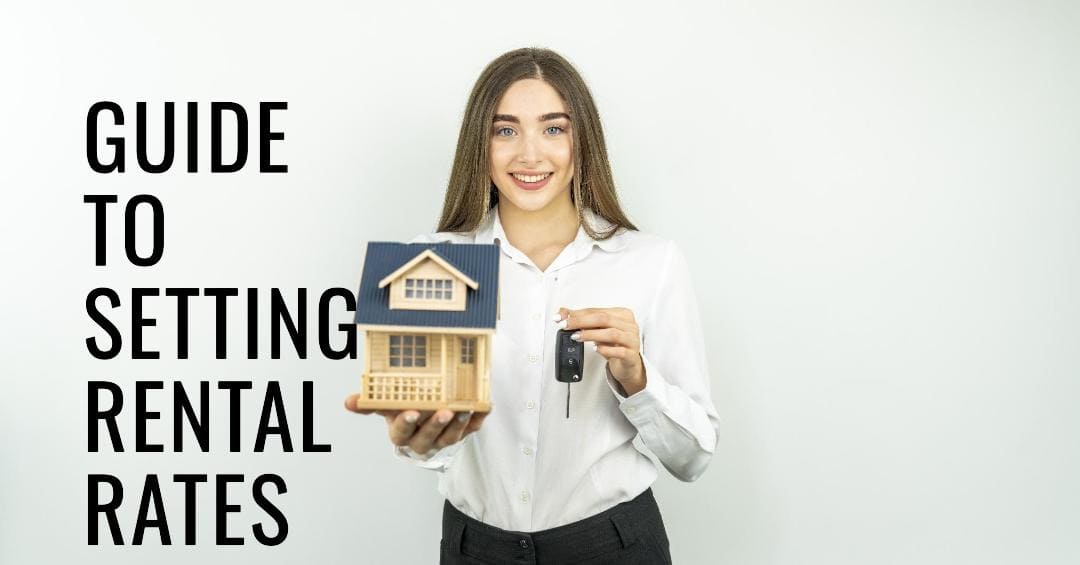Setting the right rent can be one of the most difficult areas for many people who are investing in rental property. If your property rents out in no time, it could be an indication that you are not charging enough rent. On the other hand, if your property seems to take a long time to rent out, it could be a clear indication that your rent is too high. So, how do you go about setting a rental rate that is in line with the current market?
Setting the right rental rate for your property is crucial for balancing income maximization with tenant attraction. Here's a comprehensive guide to assist you through the process.
One of the best places to start is the local newspaper. It is imperative that you do some research to find out what rent prices are driving the local market. Location is the most important factor in determining rental rates. For example, a three-bedroom, one-bath home in one part of town may rent for $1,100 a month while a similar property on the opposite side of town may only be able to draw $900 per month.
The internet is another good resource to research your local rental rates. For example, a website like www.RentOMeter.com can give you a very good indication of your local rental rates provided they have enough rental “comps” for your given area. Other websites like www.Rent.com and www.CraigsList.org can be very useful as well. Be sure you compare “apples to apples” when it comes to your property's location, square footage, bedrooms and bathrooms.
Most prospective tenants look for convenience when searching for a rental property. They are either looking for a location that is near their work or close to their children's schools. Neighborhoods that are considered to be trendy or hip can also be a driving factor, as many people like the idea of living in a certain type of neighborhood.
Of course, the budget of the renter will also play a role in determining how much they are willing to pay for rent. Due to the fact that most renters have needs that must be filled, especially in terms of space, it is quite common for square footage to also play a major role in determining rental rates. This means that larger homes and units will typically be able to rent for rates that are higher than smaller homes and units.
When setting rental rates, however, it is also important to keep in mind that there is a certain point when rental rates reach a cap. When interest rates are low and rental rates rise too high, renters will quickly realize that it just doesn't make sense to rent any longer when it could be less expensive to buy a home.
Another way to make sure that you stay updated on rental rates in your local area is to join a local association for landlords. This is a great way to make sure that you keep your finger on the pulse of the local rental market. Emerging trends in the area will not only affect you but other landlords as well. For example, if your particular area is in an economic slump or an economic boom then this could have an effect on local rental rates. Make sure you keep track of whether there have been job losses or the creation of new jobs in your local area.
It is also important to keep in mind that basic amenities can also play a role in determining how much rent you can charge for your unit or apartment. Some of the basics expected by most prospective tenants include off-street parking, washer and dryer hookups, dishwashers, etc. If these basic amenities are not available, you may find that you need to either lower your rental rate or offer something else to attract prospective tenants.
How to Set the Right Rent for Your Rental Property?
Understanding the Market
- Rental Comps: Research rents for similar properties (size, type, location, amenities) to establish a benchmark for your pricing strategy. Utilize online listings and seek guidance from property managers or real estate experts familiar with your area.
- Market Trends: Assess the demand for rentals in your area. In a landlord's market, higher rents are feasible, while a surplus of vacant units in a tenant's market might require competitive pricing to attract tenants.
Property Characteristics
- Location, Location, Location: Prime locations with excellent schools, safety, and amenities typically command higher rents. Evaluate proximity to public transportation, parks, and shopping centers.
- Condition and Size: Well-maintained properties with modern finishes justify higher rents compared to older units in need of renovations. Square footage, number of bedrooms, and bathrooms are also influential factors.
- Unique Features: Highlight features like a pool, garage, or washer and dryer, as they add value and can justify an increase in rent.
Financial Considerations
- Your Expenses: Calculate mortgage or property taxes, insurance, maintenance costs, and property management fees (if applicable) to establish a minimum acceptable rent.
Setting Your Rent
- Balancing the Factors: After assessing market rents, property value, and financial needs, determine a competitive rental price.
- Be Strategic: Consider offering slightly lower rents to attract high-quality, long-term tenants, reducing vacancy periods and tenant turnover costs.
Additional Tips
- The 2% Rule: While not foolproof, some utilize the 2% rule, estimating rent at 1-2% of the property value. However, it should supplement, not replace, market research.
- Stay Informed: Rental markets fluctuate. Continuously monitor rental listings and consult property management professionals to stay abreast of current trends.
By diligently following these steps and conducting thorough research, you can set a rental rate that attracts qualified tenants while ensuring a healthy return on your investment.





